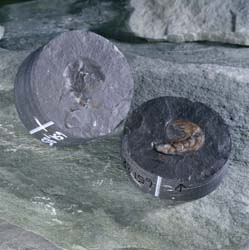Radioactive waste management
Deep underground disposal is the option favoured internationally for the long-term management of radioactive waste with significant contents of long-lived radionuclides. To enhance confidence in the protection of the environment and human health, several natural geological and engineered barriers have been used to complement each other. A reduced-scale demonstration test sought to provide a deeper understanding of how best to assess the performance of this complex barrier system after emplacement of the waste packages. It was conducted during the course of Heater Experiment, a project supported by the Fifth Euratom Framework Programme to evaluate the coupled thermo-hydro-mechanical (THM) phenomena that are expected to occur. The near-field environment is impacted by radiogenic heating and infiltration of groundwater from the surrounding rock into the engineered barriers, resulting in swelling pressure of bentonite buffers. Scientists with the National Cooperative for the Disposal of Radioactive Waste (NAGRA) focused on the mechanical behaviour of Opalinus clay, the host rock in which bentonite buffers are embedded. To simulate the soil as a three-phase (air, water, solid) porous medium the hydro-mechanically coupled code MHERLIN was used. Moreover, the predictive capabilities of rock characterisation tools and techniques incorporated in this three-dimensional finite-element code were extended. The code required continued development and validation. This was undertaken with respect to available data from laboratory and reduced-scale field tests. Improved understanding of Opalinus clay, which is a reference formation for geological disposal of radioactive waste studied across the European continent, can provide a solid basis for safety case development.



